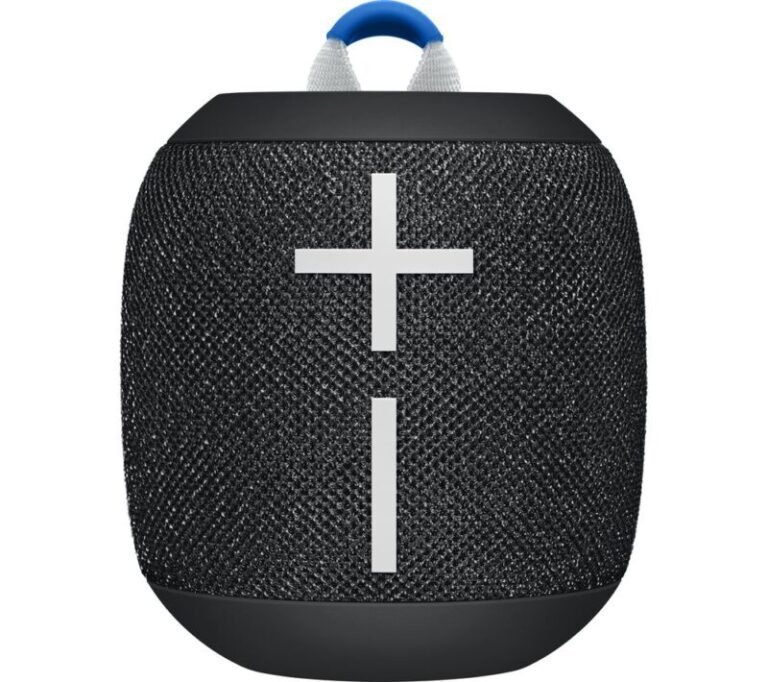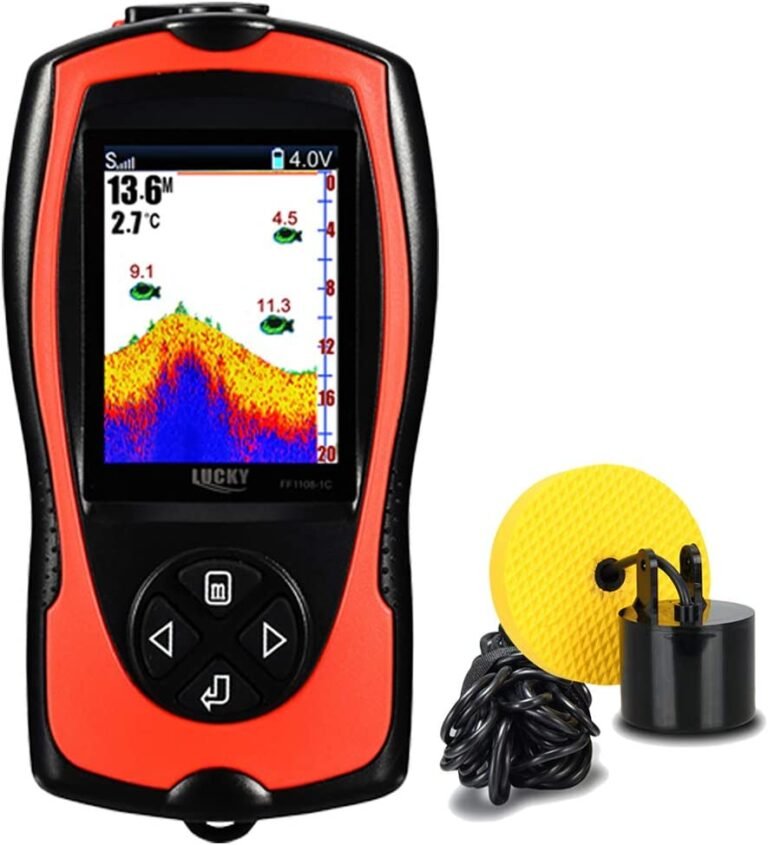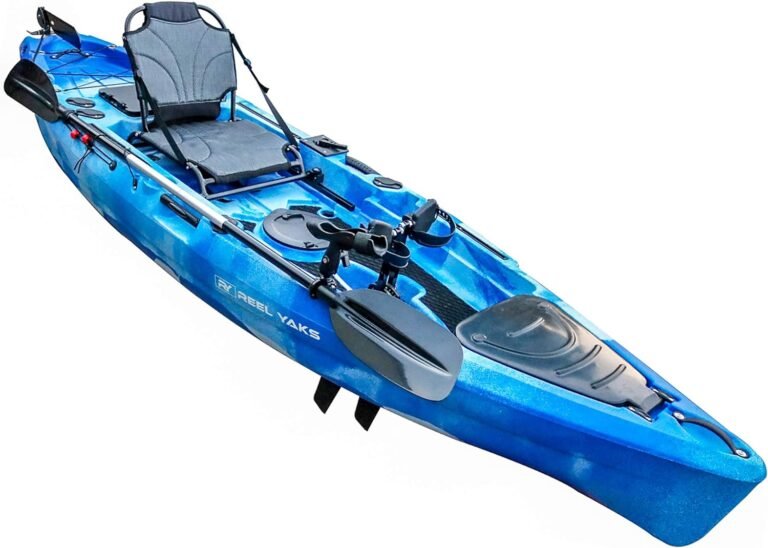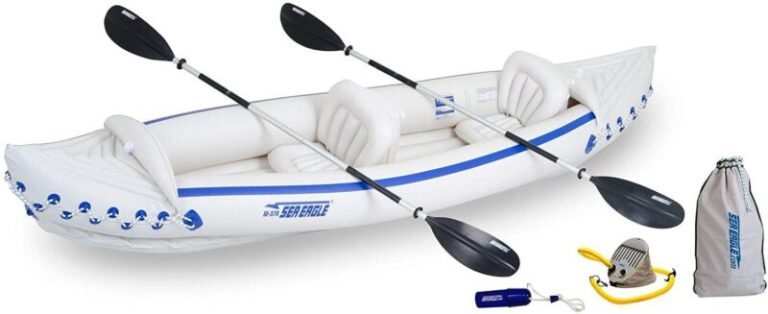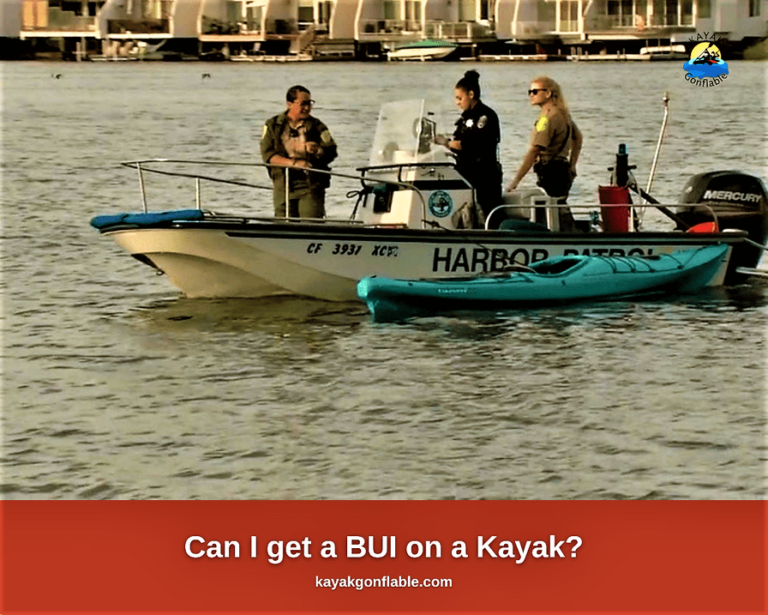What is a Tandem Kayak?
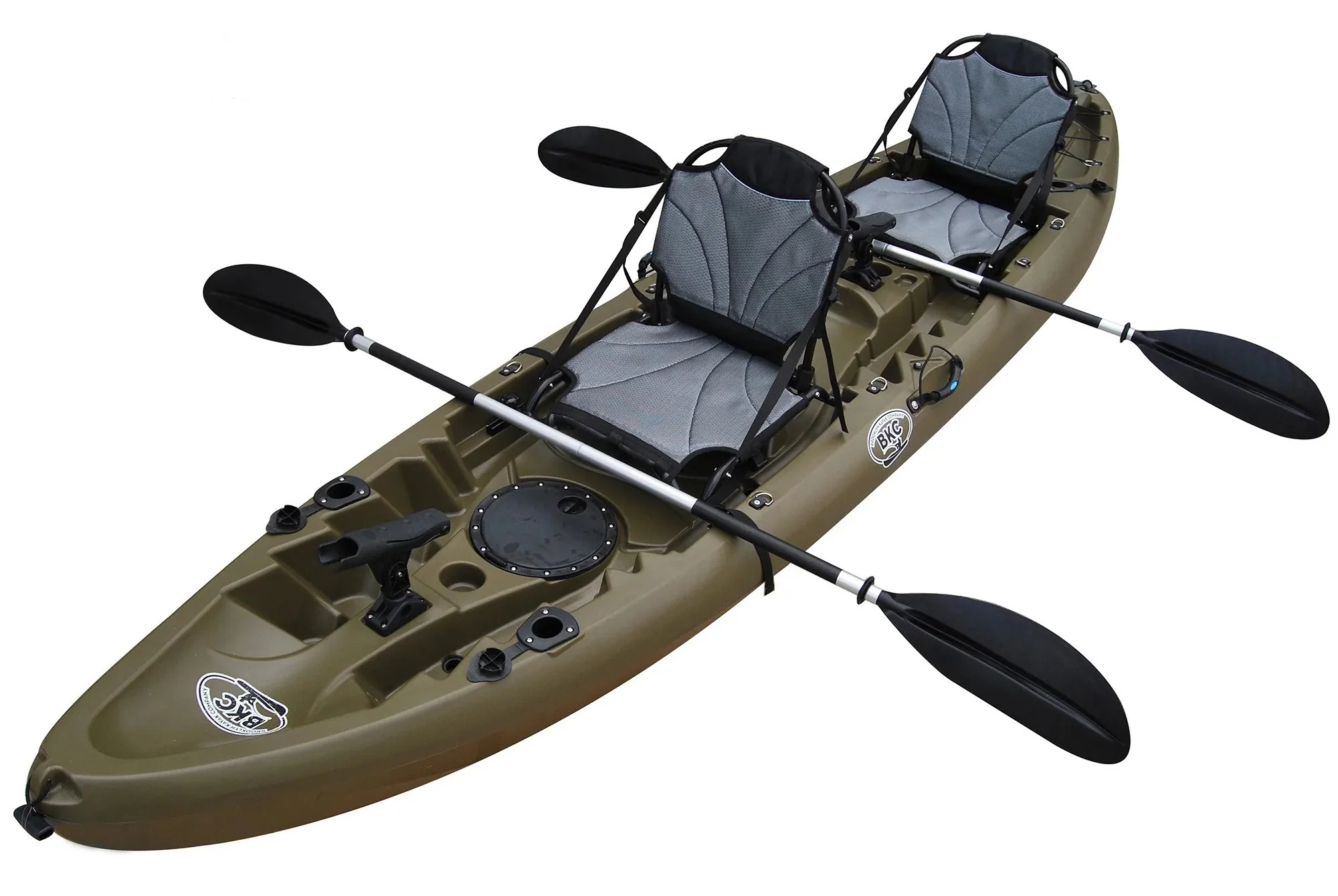
If you’re looking for an adventure that blends teamwork, nature, and a little bit of challenge, kayaking is one of the most exciting outdoor activities you can try. Kayaking is a versatile sport that comes in many forms, from serene lake paddles to intense white-water rafting. For those who love the idea of sharing the experience with a friend or loved one, the tandem kayak is the perfect choice.
A Tandemkajak, also known as a double kayak, is a specialized type of kayak designed for two paddlers. Unlike traditional Solo-Kajaks, which are designed for a single person, tandems feature a longer hull to accommodate two individuals comfortably. It’s built to accommodate two people in a single vessel, allowing you to paddle together, coordinate your movements, and enjoy the water side by side.
Whether you’re new to kayaking or looking to level up your experience, this guide will provide you with everything you need to know about tandem kayaks. From choosing the right one to learning the basics of paddling as a team, we’ve got you covered.
Wie Tandemkajaks funktionieren
Synchrones Paddeln
A tandem kayak functions differently than a solo kayak. You must paddle together at all times. When you both paddle simultaneously, the tandem kayak speeds up. Compared to a solo kayak, tandem kayak speed is high, especially when you both paddle in unison.
Gleichzeitiges Paddeln hilft auch, Paddelkollisionen zu vermeiden. Die Nähe der Paddler im Kajak kann auch dazu führen, dass Sie das Paddel Ihres Partners treffen und so die Synchronisation verlieren. Daher sollten Sie Ihre Schläge immer zeitlich festlegen.
Wer kontrolliert den Rhythmus?
Der Paddler vorne steuert den Rhythmus. Wer vorne sitzt, hat die Kontrolle über den Rhythmus. Weil Sie Ihren Partner hinter sich nicht sehen können, er aber Ihre Bewegungen klarer sehen kann. Ihr Partner sollte Ihre Paddelbewegungen von hinten verfolgen.
When you’re in the lead, make sure your movements are quick, concise, and even. Notify your partner when you need to das Kajak steuern.
Sonst verliert ihr alle das Gleichgewicht und alles wird durcheinander! Überlassen Sie die Entscheidung und den Vorschlag Ihrer Route auch Ihrer Reisebegleitung. Sei nicht egoistisch!
Sind Sie ein erfahrener Paddler? Setzen Sie sich nach hinten
Wenn Sie ein erfahrener oder starker Partner sind, sollten Sie hinten sitzen. Als erfahrener oder körperlich starker Kajakfahrer können Sie das Tempo leicht ändern, indem Sie hinten sitzen. Sie können ihre Schläge auch leicht verfolgen.
Auch längeres Paddeln kann Ihren Partner erschöpfen. Vor allem Neulinge. Sie werden auf jeden Fall eine Pause machen wollen. Wenn Sie stark genug sind, übernehmen Sie die Kontrolle über das Boot. Sie müssen weiter paddeln, was einfach ist, wenn Sie hinten sitzen.
Ein Tandemkajak drehen
Das Wenden eines Tandemkajaks ist komplexer als das Wenden eines Solokajaks. Aber das Beste daran, dass Sie beide auf einem Tandemkajak sitzen, ist, dass Sie nur zusammenarbeiten müssen. Kommunizieren.
Auch wenn Ihr Partner neu im Team ist, kommunizieren Sie mit ihm, damit er lernt, was er tun muss. Wenn Sie beide wissen, was zu tun ist, lässt sich das Boot viel einfacher steuern. Wie drehe ich mein Tandem am besten? Wer ist in der ersten Reihe? Du? Bußgeld.
Wenn Sie vorne sitzen, führen Sie auf der einen Seite einen Vorwärtsschwung aus, während Ihr Partner auf der anderen Seite einen Rückwärtsschwung ausführt. Und das alles gleichzeitig. Sie können das Kajak schnell wenden, besonders wenn es stillsteht.
Ein Tandemkajak verfügt außerdem über ein Ruder, mit dem Sie es drehen können. Das Ruder hält das Boot auf Kurs, ohne dass zusätzliche, energieraubende Korrekturschläge erforderlich sind. Wenn Sie im Team arbeiten, wird es jedoch seltener verwendet.
Aus welchen Materialien bestehen Tandemkajaks?
Diese Kajaks werden aus unterschiedlichen Materialien hergestellt, von denen jedes seinen eigenen einzigartigen Vorteil in Bezug auf Haltbarkeit, Gewicht und Leistung bietet. Zu den gängigen Materialien, die beim Bau von Tandemkajaks verwendet werden, gehören:
- Fiberglas: Glasfaserkajaks sind für ihr geringes Gewicht und ihre hervorragende Leistung bekannt. Sie bieten ein gutes Gleichgewicht zwischen Gewicht und Haltbarkeit und sind daher die erste Wahl für diejenigen, die Effizienz in ihren Tandemkajaks suchen.
- Polyethylen (PE): PE ist aufgrund seiner Haltbarkeit und Erschwinglichkeit eine beliebte Wahl. Kajaks aus Polyethylen sind robust und halten Stößen und Schrammen stand. Der einzige Nachteil? Sie sind tendenziell schwerer als andere Materialien.
- Aufblasbar (PVC oder Hypalon): Aufblasbare Tandems sind sehr tragbar und leicht zu verstauen. Sie bestehen typischerweise aus PVC- oder Hypalon-Materialien, die robust und durchstoßfest sind. Obwohl sie möglicherweise nicht die gleiche Leistung wie Hartschalenkajaks bieten, zeichnen sie sich in puncto Komfort und Transportierbarkeit aus.
- Verbundwerkstoffe (Carbon, Kevlar): Verbundtandems sind die leichtesten und oft auch die teuersten. Sie bieten ein außergewöhnliches Verhältnis von Festigkeit zu Gewicht und sind daher bei ernsthaften Paddlern und Enthusiasten beliebt.
Vorteile von Tandemkajaks
Tandem kayaks offer a variety of benefits that enhance the paddling experience, making them a top choice for those seeking to share the adventure with a partner. Whether you’re a seasoned kayaker or a first-timer, the advantages of tandem kayaks are undeniable.
Teamwork and Shared Experience
One of the standout features of tandem kayaks is the opportunity for teamwork and collaboration. When paddling together in a tandem kayak, both paddlers need to be in sync to move efficiently. This shared experience can foster:
- Kommunikation: Effective communication between paddlers is key to achieving smooth coordination. You’ll often find that paddling in tandem builds a connection, as you both work toward a common goal.
- Cooperation: Each paddler plays a vital role in propelling the kayak forward, requiring cooperation to maintain speed, direction, and balance.
- Bonding: Whether you’re with a family member, friend, or partner, tandem kayaking provides a unique bonding experience. Sharing the thrill of paddling and working together to navigate the water can bring people closer and strengthen relationships.
Increased Power and Efficiency
With two paddlers working together, tandem kayaks provide a significant advantage when it comes to power and efficiency:
- More Power: Two paddlers generate more force than one, meaning that you’ll have greater propulsion. This makes it easier to travel longer distances or maintain higher speeds with less effort from each individual.
- Faster Speeds: Tandem kayaks often allow for faster paddling, especially when both paddlers are in sync. Whether you’re racing to your destination or just enjoying the water at a quicker pace, the combined power makes it easier to move through the water efficiently.
Size & Stability
Tandem kayaks are typically longer and wider than their single counterparts. This extra length and width not only provide more space for two paddlers but also improve the kayak’s stability on the water, making it easier to balance and control. Tandem kayaks are generally more stable than solo kayaks due to their longer length and wider build:
- Erhöhte Stabilität: The added length and width help distribute the weight of two paddlers more evenly, providing a steadier platform on the water. This makes them an excellent choice for beginners or anyone looking for a more stable experience, especially in calm or slightly choppy waters.
- Gleichgewicht: Tandem kayaks are less likely to tip over compared to solo kayaks, even in conditions where a solo kayaker might struggle with balance.
Cost-Effective (Compared to Two Single Kayaks)
For those paddling as a pair, tandem kayaks offer a more budget-friendly option than purchasing two separate kayaks:
- Lower Cost: Buying a tandem kayak is often more affordable than purchasing two individual kayaks. This is especially beneficial for families or couples looking to share a kayak without breaking the bank.
- Value for Money: Considering that tandem kayaks often come with more features and can carry more gear, they provide great value when compared to the cost of two single kayaks.
Shared Load
Tandem kayaks make it easier to distribute the load between two paddlers, reducing individual effort and stress:
- Even Gear Distribution: With tandem kayaks, you have the benefit of sharing gear, equipment, and supplies, making it easier to pack for longer trips without overburdening one person. The load can be divided to ensure that each paddler carries a manageable weight, contributing to better balance and performance.
- Less Physical Strain: Since the workload is split between two paddlers, tandem kayaks make it easier to paddle for longer periods without exhausting one person.
Kapazität
Tandem kayaks typically offer a higher maximum weight capacity compared to solo kayaks, allowing for more gear or larger paddlers:
- Higher Weight Capacity: Tandem kayaks can accommodate more weight, which is ideal for carrying additional camping gear, fishing equipment, or other supplies needed for longer trips.
- Versatility in Use: The increased weight capacity allows tandem kayaks to serve multiple purposes, from family outings to extended touring expeditions, without sacrificing comfort or safety.
Nachteile von Tandemkajaks
While tandem kayaks offer many advantages, they also come with their own set of challenges. These kayaks, designed for two paddlers, require more coordination, and can sometimes be less versatile than their single counterparts.
Coordination Required
Tandem kayaking is all about teamwork, and for that, effective coordination is crucial:
- Synchronized Paddling: To make the kayak move smoothly and efficiently, both paddlers need to be in sync. A lack of coordination can result in uneven strokes, reduced speed, and even loss of direction. This means both paddlers must communicate well and practice together to achieve a unified rhythm.
- Learning Curve: For new paddlers or people who aren’t used to working together in such a way, it may take time and practice to master synchronized paddling. Beginners might struggle with getting the timing right, which can affect the overall experience.
Less Maneuverable than Single Kayaks
Tandem kayaks are typically larger and more stable than solo kayaks, but this size comes at the cost of maneuverability:
- Reduced Agility: Due to their extended length and wider design, tandem kayaks are not as quick to turn or respond to sudden movements as single kayaks. This can be a downside when navigating tight spaces, such as around rocks or through narrow waterways.
- Challenges in Rough Waters: While they provide stability, the size of tandem kayaks can make them harder to maneuver in fast-moving or turbulent waters. Solo kayakers have more control over their vessel’s movement, while tandem kayakers may find themselves needing to work harder to navigate.
Potential for Conflict
While tandem kayaking promotes bonding, it can also bring out some tension:
- Disagreements Between Paddlers: Differences in paddling experience, expectations, or communication styles can lead to conflict. If one paddler feels that the other is not pulling their weight or is out of sync, it can create frustration. It’s important to establish clear communication and mutual respect before heading out on the water.
- Personality Clashes: For those who are not used to working closely together, personalities can sometimes clash, and this can affect the overall paddling experience. Having an open and flexible attitude is key to ensuring a smooth, enjoyable time.
Transport und Lagerung
Transporting and storing tandem kayaks can be more difficult than dealing with single kayaks:
- Bulkier Size: Tandem kayaks are generally heavier and bulkier than single kayaks. This can make loading and unloading them from a vehicle more challenging, especially for those without a kayak rack or helpers.
- Lagerraum: Storing a tandem kayak requires a larger space, which can be an issue for people with limited storage options. Not only do they take up more room, but their size and weight can make them harder to handle in tight spaces.
- Transport Accessories: In some cases, specialized transport equipment like roof racks or trailers may be necessary to properly move a tandem kayak, which could add to the overall cost and effort.
Weight Limits
Although tandem kayaks generally offer a higher weight capacity than single kayaks, it’s essential to consider the limits:
- Maximum Weight Capacity: Every tandem kayak comes with a specified weight limit, which includes both paddlers and any gear or supplies they carry. Exceeding this limit can affect the kayak’s performance, stability, and safety.
- Uneven Weight Distribution: If one paddler is significantly heavier than the other, it can affect the balance and handling of the kayak. Even distribution of weight between the two paddlers is crucial to ensure optimal performance and comfort.
Arten von Tandemkajaks
When choosing the right tandem kayak, it’s important to understand the variety of options available. Different types of tandem kayaks cater to different needs and experiences on the water. Let’s break down the key types of tandem kayaks, highlighting their unique features, pros, and cons to help you find the best fit for your adventures.
Sit-in Tandem Kayaks
In sit-in tandem kayaks, paddlers sit inside the hull, typically enclosed by a cockpit that offers a snug fit. These kayaks provide more protection from the elements, including wind, water, and splashes.
Vorteile:
- Better Performance in Colder Waters: The enclosed cockpit helps keep paddlers warmer, making these kayaks ideal for cooler climates or colder water.
- More Control in Rough Conditions: The hull design provides enhanced stability, offering better control in choppy or rough waters.
- Drier Ride: Since the cockpit protects paddlers from splashes, this type of kayak keeps you relatively dry compared to sit-on-top kayaks.
Nachteile:
- Challenging to Re-enter After Capsizing: If you fall overboard, getting back into a sit-in tandem kayak can be difficult, especially without assistance.
- Less Storage Space: The cockpit’s design limits the amount of space available for gear, and storage is often less convenient than in sit-on-top models.
Sit-on-Top Tandem Kayaks
Sit-on-top tandem kayaks allow paddlers to sit on top of the hull rather than inside it. These kayaks often have self-bailing scupper holes that allow water to drain out automatically.
Vorteile:
- Easy Entry and Exit: Getting in and out of a sit-on-top kayak is much easier, making them ideal for beginners or for people who plan to get in and out of the kayak frequently.
- Self-Bailing Design: The scupper holes allow water to drain out, keeping the kayak dry and minimizing the need for manual bailing.
- More Storage Space: These kayaks generally provide more open deck space for storing gear or carrying supplies.
- Great for Warm Weather: The open design makes them excellent for warm climates, offering a more relaxed, open-air paddling experience.
Nachteile:
- Less Protection from the Elements: The open design means paddlers are more exposed to the weather, which can be uncomfortable in colder conditions.
- Less Stable in Rough Conditions: Due to their lighter weight and open structure, sit-on-top kayaks can be less stable, especially in rougher waters or windy conditions.
Inflatable Tandem Kayaks
Inflatable tandem kayaks are made from durable, high-quality materials that can be inflated and deflated, making them highly portable and easy to store when not in use.
Vorteile:
- Highly Portable: These kayaks are easy to deflate, roll up, and store in compact spaces, making them perfect for those who need a portable watercraft.
- Erschwinglich: Generally, inflatable tandem kayaks are more budget-friendly than their hard-shell counterparts, making them an excellent option for those new to the sport or casual paddlers.
Nachteile:
- Less Durable: While inflatable kayaks are sturdy, they can still be prone to punctures and may not hold up as well over time as hard-shell models.
- Performance May Be Affected: The kayak’s performance can vary depending on how fully it’s inflated, and it may not offer the same speed or stability as a hard-shell tandem kayak.
Fishing Tandem Kayaks
Designed specifically for fishing, fishing tandem kayaks come equipped with various features that make them ideal for anglers, such as rod holders, extra storage compartments, and stable platforms for casting.
Vorteile:
- Optimized for Fishing: These kayaks offer features like rod holders, tackle box storage, and even mounting options for fish finders, making them the perfect choice for anglers.
- Increased Comfort and Convenience: With features like adjustable seats and spacious storage areas, these kayaks are built for longer days on the water and added comfort.
Nachteile:
- More Expensive: Due to their specialized design and features, fishing tandem kayaks tend to be pricier than standard recreational models.
- Limited Versatility: While they excel at fishing, fishing kayaks may not be as versatile for other types of paddling, like touring or recreational use.
Touring/Sea Kayaking Tandems
Touring or sea kayaking tandems are built for long-distance trips, designed to handle longer excursions with features like rudders, ample storage compartments, and efficient hull designs.
Vorteile:
- Excellent Performance for Long-Distance Paddling: With a sleek hull and design optimized for speed, these kayaks are perfect for covering long distances on the water.
- Ample Storage for Gear: The large storage compartments allow for extended trips, providing space to carry camping gear, food, and other essentials.
Nachteile:
- Typically More Expensive: Due to their high-quality design, these kayaks are often the most expensive.
- Requires Paddling Experience: Touring kayaks are built for more advanced paddlers and require skill and knowledge to handle effectively, especially in open water or strong currents.
Choosing a Tandem Kayak
When it comes to choosing the right tandem kayak, there’s no one-size-fits-all solution. Your choice will depend on a range of factors, from how you plan to use the kayak to your budget and the type of water you’ll be paddling in. In this section, we’ll break down the key considerations to help guide you in selecting the perfect tandem kayak for your needs.
1. Intended Use
Before you start shopping, it’s important to define how you plan to use the tandem kayak. There are different kayaks tailored to various activities, and selecting one that aligns with your goals will make all the difference.
- Freizeitkajakfahren: If you’re planning casual paddling in calm lakes or rivers, a basic recreational tandem kayak will likely do the trick. These kayaks are typically more affordable, easier to handle, and offer a comfortable, stable experience for leisurely trips.
- Angeln: If you’re a pair of anglers, look for tandem kayaks specifically designed for fishing. These will include features such as rod holders, built-in storage compartments for gear, and wider hulls for extra stability when casting.
- Touring and Expeditions: If you’re planning longer journeys or multi-day trips, you’ll want a tandem kayak built for touring. These models have more efficient hulls, ample storage for gear, and often include rudders to help with steering on long trips.
2. Type of Water
Where you plan to kayak plays a huge role in choosing the right tandem kayak:
- Calm Lakes and Rivers: For calm, slow-moving waters, a wider, more stable kayak is usually ideal. Look for a tandem kayak that offers comfort and stability without the need for specialized features.
- Ocean or Sea Kayaking: If you’re planning to venture into the ocean or more challenging conditions, you’ll need a kayak that can handle rough waters. Touring and sea kayaks typically have sleeker, more efficient designs, along with added features like rudders for improved control in open water.
3. Partner Considerations
Your kayaking experience is just as dependent on your paddling partner as it is on the kayak itself. Consider the following:
- Größe und Gewicht: Make sure the kayak can comfortably accommodate both you and your partner’s size and weight. Tandem kayaks typically have higher weight capacities than solo kayaks, but it’s important to stay within those limits for optimal performance.
- Skill Level and Abilities: If one of you is a more experienced kayaker, you may need to consider kayaks that offer more control and maneuverability for a skilled paddler while ensuring the less experienced partner feels comfortable and stable.
4. Budget
Tandem kayaks come in a range of prices, from budget-friendly models to high-end, specialized kayaks. The price depends on several factors, such as materials, features, and brand.
- Entry-Level Models: These are typically made from durable plastic and are great for casual paddling. They’re often the most affordable, but they may lack advanced features or premium construction.
- Mid-Range Models: If you’re looking for better performance, comfort, and durability, consider mid-range models made from fiberglass or composite materials. These kayaks are often a good balance between affordability and quality.
- High-End Models: For serious touring, fishing, or expedition kayakers, the best option is often a composite or inflatable kayak with advanced features like rudders, ample storage, and premium comfort. Expect to pay a premium for these types of kayaks.
5. Materials
Kayak materials affect both performance and durability. Here’s a quick breakdown:
- Plastik: Durable and affordable, plastic kayaks are popular for recreational and casual paddling. They are resistant to scratches and dents, but they can be heavier than composite kayaks.
- Fiberglass and Composite: These materials are lightweight and offer excellent performance, making them ideal for touring or sea kayaking. They’re more expensive but provide great speed and handling.
- Aufblasbar: These kayaks are portable and easy to store, making them perfect for those who have limited storage space or need to transport their kayak without a roof rack. However, they may not perform as well in rough waters as hard-shell kayaks.
6. Size and Weight
The size and weight of your tandem kayak will affect its portability and storage:
- Storage and Transportation: Consider how you’ll transport the kayak. Tandem kayaks are generally larger and heavier, so make sure you have the proper vehicle (like a roof rack or trailer) to transport it. If storage is limited, look for a kayak that’s easy to deflate (in the case of inflatable models) or a compact design.
- Gewichtskapazität: Tandem kayaks are built to carry the weight of two paddlers, but make sure the kayak’s weight capacity matches your combined weight and any gear you’ll bring along.
7. Features to Look For
Different tandem kayaks come with a variety of features designed to improve comfort, performance, and convenience:
- Ruder und Skegs: These are useful for steering, especially in larger bodies of water or when paddling long distances. If you’re going on a multi-day trip or sea kayaking, a kayak with a rudder system might be ideal.
- Storage Compartments: For long trips or fishing, having ample storage is key. Look for kayaks with large compartments or waterproof hatches where you can stow your gear.
- Seating Comfort: Long hours of paddling require comfortable seats. Adjustable or padded seats can improve your comfort, and it’s worth looking for a kayak with supportive seating for both paddlers.
8. Trying Before Buying
If possible, test paddle different tandem kayaks before making your final decision. While specifications and reviews can provide guidance, the real test is how the kayak feels on the water:
- Test Paddle: Take the kayak for a spin to check its stability, comfort, and maneuverability. This will also help you assess how easy it is for both paddlers to work together.
- Compatibility with Your Partner: It’s important that both you and your partner feel comfortable in the kayak. Make sure both paddlers can easily reach the paddles, adjust seating, and maneuver the kayak.
Anatomie eines Tandemkajaks
Rumpf: Der Rumpf ist der Körper des Kajaks, der Teil, der mit dem Wasser in Kontakt kommt. Es bestimmt die Stabilität, Geschwindigkeit und Manövrierfähigkeit des Kajaks. Tandemkajaks können unterschiedliche Rumpfformen haben, z. B. einen flachen Boden für Stabilität oder einen V-förmigen Rumpf für bessere Spurtreue und Geschwindigkeit.
- Länge: Tandemkajaks sind in der Regel länger als Einsitzerkajaks und reichen von 17 bis 24 Fuß oder mehr. Die erhöhte Länge erhöht die Stabilität und Geschwindigkeit.
- Breite: Die Breite des Rumpfes beeinflusst die Stabilität. Tandemkajaks sind in der Regel breiter als Solokajaks, was die Stabilität erhöht, die Geschwindigkeit jedoch leicht beeinträchtigen kann.
Cockpit: Das Cockpit ist der Sitzbereich, in dem Paddler sitzen. Bei Tandems gibt es zwei separate Cockpits, eines für jeden Paddler. Das Design und die Anordnung der Cockpits können je nach Verwendungszweck des Kajaks variieren.
- Sitzplätze: Tandems verfügen über zwei separate Sitzbereiche, die jeweils mit einem Sitzplatz für einen Paddler ausgestattet sind. Diese Sitze verfügen möglicherweise über verstellbare Rückenlehnen und gepolsterte Kissen für Komfort bei längeren Paddelsitzungen.
Deck: The deck is the top Teil des Kajaks that covers the hull. It often includes features like storage hatches, bungee cords for securing gear, and handles for easy carrying.
Fußstützen oder Fußrasten: Dabei handelt es sich um verstellbare Fußstützen im Cockpit, die den Füßen des Paddlers einen Auflagepunkt bieten. Richtig eingestellte Fußstützen helfen dabei, das Gleichgewicht zu halten und unterstützen effiziente Paddelschläge.
Skeg oder Ruder: Viele Tandems sind mit einem Skeg- oder Rudersystem ausgestattet, um die Steuerung zu erleichtern. Diese Komponenten können von einem oder beiden Paddlern gesteuert werden, um einen geraden Kurs beizubehalten oder effektiv zu navigieren.
Lagerluken: Tandemkajaks verfügen oft über mehrere in das Deck integrierte Stauluken. Diese wasserdichten Fächer ermöglichen Paddlern die sichere Aufbewahrung von Ausrüstung, Kleidung und Vorräten.
Tandem-Kajak-Führer
Tandemkajakfahren eröffnet eine Welt voller Abenteuer und Verbindungen. Unabhängig davon, ob Sie diese Reise mit einem Partner, einem Freund oder einem Familienmitglied antreten, sind die richtige Vorbereitung und die richtigen Techniken für ein sicheres und angenehmes Erlebnis unerlässlich.
Wichtige Vorbereitung für Ihr Abenteuer
Sicherheitsaspekte
Sicherheit sollte beim Kajakfahren immer oberste Priorität haben. Hier sind einige wesentliche Sicherheitsaspekte:
- Schwimmwesten: Stellen Sie sicher, dass beide Paddler jederzeit ordnungsgemäß sitzende und von der Küstenwache zugelassene Schwimmwesten tragen.
- Kommunikation: Stellen Sie eine klare und effektive Kommunikation zwischen Paddlern her. Besprechen Sie Handzeichen oder verbale Hinweise, um Schläge und Manöver zu koordinieren.
- Float-Plan: Teilen Sie jemandem an Land Ihre geplante Route und die voraussichtliche Rückkehrzeit mit.
- Wettercheck: Überprüfen Sie die Wettervorhersage, bevor Sie losfahren, und achten Sie auf wechselnde Wetterbedingungen auf dem Wasser.
- Verantwortungsvoll paddeln: Respect local regulations, Navigationsregeln, and wildlife. Avoid disturbing sensitive habitats.
Benötigte Ausrüstung und Ausrüstung
Bevor Sie ins Wasser gehen, stellen Sie sicher, dass Sie über die folgende Ausrüstung und Ausrüstung verfügen:
- Ihr Tandemkajak: Stellen Sie sicher, dass Ihr Kajak in gutem Zustand ist und keine Lecks oder strukturelle Probleme aufweist.
- Paddel: Sie benötigen zwei Paddel, eines für jeden Paddler. Wählen Sie Paddel geeigneter Länge und Art (z. B. Touren-, Wildwasser- oder Freizeitpaddel) für Ihre geplante Aktivität.
- Schwimmwesten: Tragen Sie, wie bereits erwähnt, gut sitzende und zugelassene Schwimmwesten.
- Sicherheitsausrüstung: Pack essentials like a whistle, a Bilgenpumpe or sponge to remove water from the kayak, a first aid kit, and a rescue rope.
- Navigationstools: Nehmen Sie eine Karte, einen Kompass oder ein GPS-Gerät mit, um sich bei der Erkundung unbekannter Gewässer zurechtzufinden.
- Trockentaschen: Benutzen Sie Trockenbeutel oder -behälter, um Ihre Ausrüstung, Kleidung und Wertsachen trocken zu halten.
- Sonnenschutz: Tragen Sie Sonnencreme, eine Sonnenbrille mit UV-Schutz und einen Hut mit breiter Krempe, um sich vor der Sonne zu schützen.
So starten Sie Ihr Tandemkajak
Das Zuwasserlassen Ihres Kajaks kann schwierig sein, aber mit etwas Übung wird es zur zweiten Natur. Hier sind einige nützliche Schritte, die Sie befolgen sollten:
- Bereiten Sie das Kajak vor: Stellen Sie sicher, dass die gesamte Ausrüstung gesichert ist und das Kajak ordnungsgemäß beladen ist und eine gleichmäßige Gewichtsverteilung aufweist.
- Startplatz: Suchen Sie sich zum Zuwasserlassen eine sanfte und stabile Uferlinie aus. Vermeiden Sie steile Ufer oder felsige Bereiche, die zu Unfällen führen können.
- Betreten Sie das Kajak: Beide Paddler sollten auf beiden Seiten des Kajaks stehen und das Paddel horizontal über das Kajak halten, um für Stabilität zu sorgen.
- Abstoßen: Schieben Sie das Kajak beim Einsteigen langsam ins Wasser. Setzen Sie sich einzeln hin und achten Sie auf Stabilität, bevor Sie mit dem Paddeln beginnen.
Anleitung zum Tandemkajakfahren: Grundlegende Paddeltechniken
Für ein effizientes und angenehmes Kajakerlebnis sind die richtigen Paddeltechniken unerlässlich. Hier sind einige grundlegende Techniken, die Sie beachten sollten:
- Synchronisieren Sie Ihre Schläge: Koordinieren Sie Ihre Paddelschläge mit Ihrem Partner, um einen geraden Kurs beizubehalten. Kommunikation ist der Schlüssel zur Synchronisierung.
- Lenkung: Wenn Ihr Kajak mit einem Ruder oder einer Skeg ausgestattet ist, besprechen Sie mit Ihrem Partner, wie Sie es steuern. Normalerweise übernimmt ein Paddler die Steuerung, während sich der andere auf den Antrieb konzentriert.
- Haltung beibehalten: Sitzen Sie mit geradem Rücken und gebeugten Knien. Nutzen Sie Ihre Rumpfmuskulatur für die Paddelkraft und nicht nur Ihre Arme. Behalten Sie das Paddel entspannt im Griff.
- Vermeiden Sie Überanstrengung: Das Paddeln im Tandem sollte eine harmonische Anstrengung sein. Vermeiden Sie es, zu kraftvoll zu paddeln, da dies zu Ermüdung und Unwohlsein führen kann.
- Übungsmanöver: Machen Sie sich mit grundlegenden Manövern wie Wenden, Anhalten und Rückwärtsfahren vertraut. Üben Sie diese in ruhigen Gewässern, bevor Sie sich an anspruchsvollere Umgebungen versuchen.
Richtige Etikette beim Kajakfahren
Die richtige Etikette ist nicht nur eine Frage der Höflichkeit, sondern auch für die Sicherheit und den Umweltschutz unerlässlich. Hier sind einige Verhaltensregeln für Kajakfahrer:
- Vorfahrt: Wenn Sie das Wasser mit anderen Schiffen teilen, müssen Sie die Vorfahrtsregeln verstehen und diese einhalten. Im Allgemeinen weichen langsamer fahrende Schiffe schnelleren Schiffen aus.
- Abstand wahren: Halten Sie einen respektvollen Abstand zu anderen Kajakfahrern und Booten. Vermeiden Sie eine zu große Annäherung, da dies störend und potenziell gefährlich sein kann.
- Packen Sie ein, was Sie mitbringen: Praktizieren Sie die „Hinterlasse keine Spuren“-Prinzipien. Werfen Sie keinen Müll weg und lassen Sie keinen Müll zurück. Bringen Sie alles zurück, was Sie mitbringen.
- Respektieren Sie die Tierwelt: Beobachten Sie Wildtiere aus der Ferne, ohne sie zu stören. Vermeiden Sie die Annäherung an nistende Vögel, Robben oder andere Tiere.
- Lärm minimieren: Halten Sie den Lärmpegel auf ein Minimum. Übermäßiger Lärm kann die Tierwelt stören und die Ruhe der natürlichen Umgebung stören.
- Bleib informiert: Beachten Sie die örtlichen Vorschriften oder besonderen Regeln für die Wasserstraße, auf der Sie Kajak fahren. In einigen Bereichen gelten möglicherweise besondere Einschränkungen oder Richtlinien.
Distinguishing Tandem Kayaks from Other Multi-Person Boats
While tandem kayaks may seem similar to other multi-person watercraft like canoes or double kayaks, there are key differences:
- Tandem Kayaks vs. Canoes: Canoes are typically wider and have a more open design, with seats that often allow for paddling from a kneeling or sitting position. Unlike tandem kayaks, which have a more enclosed cockpit and require double-bladed paddles, canoes use a single-bladed paddle and offer more room for gear and passengers.
- Tandem Kayaks vs. Double Kayaks: The term “double kayak” is sometimes used interchangeably with “tandem kayak,” but the difference lies in the design and paddling experience. Tandem kayaks generally refer to sit-in kayaks, where paddlers sit inside the vessel, while double kayaks may also refer to sit-on-top kayaks, where paddlers sit on the deck. Both types, however, serve the same purpose, paddling together, but their design variations offer different comfort levels and handling characteristics.
- Tandem Kayaks vs. Other Multi-Person Watercraft: Other multi-person boats like rowboats or pedal boats have a different design and method of propulsion. Rowboats and pedal boats require different forms of movement, whereas tandem kayaks are specifically designed for the efficient use of paddles, maximizing speed and maneuverability with teamwork.
Tandem kayaks offer a unique and rewarding experience for paddlers, combining the power of teamwork with increased stability, efficiency, and the ability to explore a variety of waters. With features such as dual cockpits, ample storage, and the option to accommodate different materials and designs, they are built for versatility and comfort.

